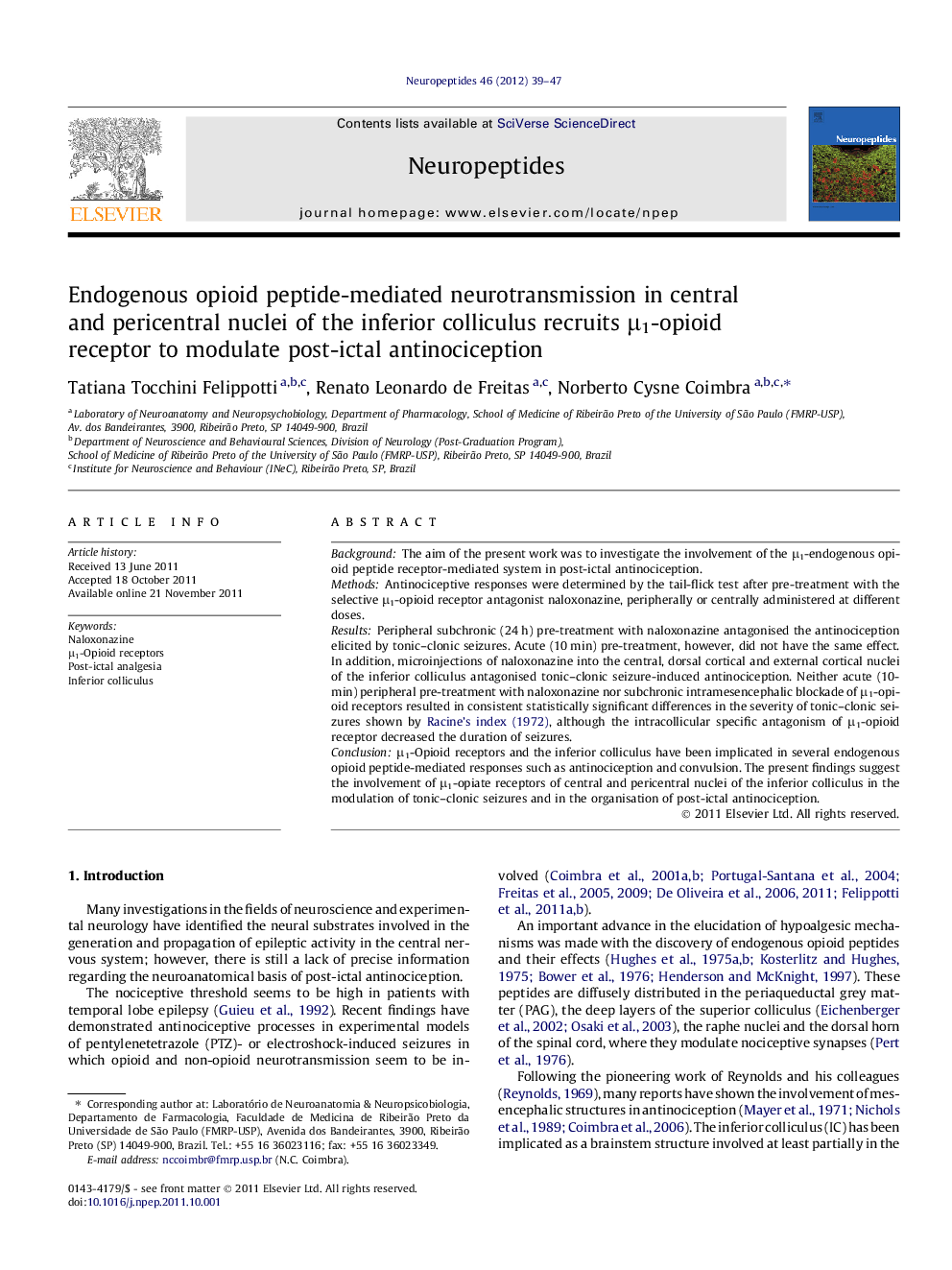| Article ID | Journal | Published Year | Pages | File Type |
|---|---|---|---|---|
| 2808300 | Neuropeptides | 2012 | 9 Pages |
BackgroundThe aim of the present work was to investigate the involvement of the μ1-endogenous opioid peptide receptor-mediated system in post-ictal antinociception.MethodsAntinociceptive responses were determined by the tail-flick test after pre-treatment with the selective μ1-opioid receptor antagonist naloxonazine, peripherally or centrally administered at different doses.ResultsPeripheral subchronic (24 h) pre-treatment with naloxonazine antagonised the antinociception elicited by tonic–clonic seizures. Acute (10 min) pre-treatment, however, did not have the same effect. In addition, microinjections of naloxonazine into the central, dorsal cortical and external cortical nuclei of the inferior colliculus antagonised tonic–clonic seizure-induced antinociception. Neither acute (10-min) peripheral pre-treatment with naloxonazine nor subchronic intramesencephalic blockade of μ1-opioid receptors resulted in consistent statistically significant differences in the severity of tonic–clonic seizures shown by Racine’s index (1972), although the intracollicular specific antagonism of μ1-opioid receptor decreased the duration of seizures.Conclusionμ1-Opioid receptors and the inferior colliculus have been implicated in several endogenous opioid peptide-mediated responses such as antinociception and convulsion. The present findings suggest the involvement of μ1-opiate receptors of central and pericentral nuclei of the inferior colliculus in the modulation of tonic–clonic seizures and in the organisation of post-ictal antinociception.
